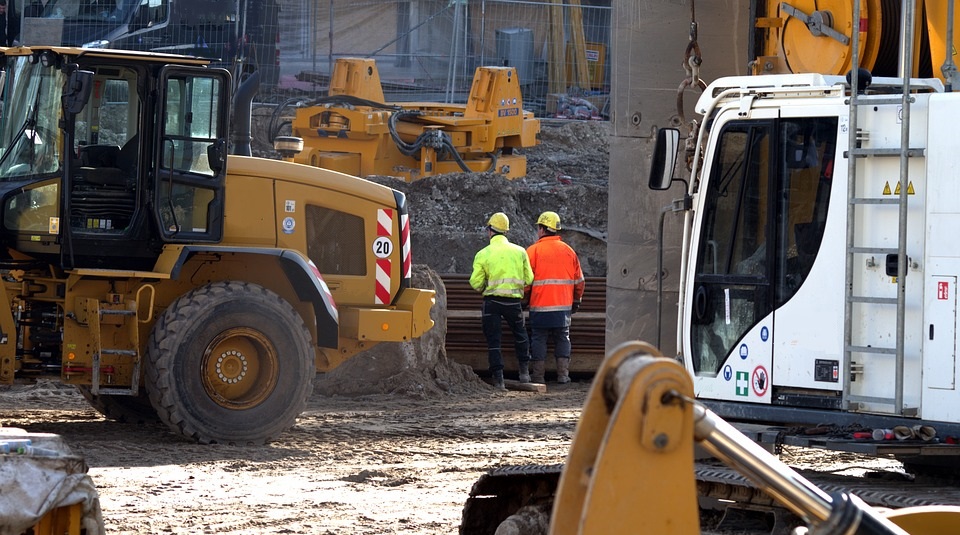
Every year there are hundreds of incidents in the construction industry. Heavy equipment operators, ground workers and pedestrians are injured or killed by heavy equipment. Many of them are a result of rollovers or individuals being struck or crushed by the equipment. Struck by deaths are one of the construction industries leading causes of death.
Some of the most common incidents involving heavy equipment:
- Equipment not being locked up accordingly.
- Falling objects and loads.
- Heavy machinery tipping over
- Operators failing to check their blind spots.
- Colliding with another piece of equipment or building
- Using hazard signs when needed.
- Not wearing suitable clothing.
Here are ways to help prevent an accident from happening when working with heavy machinery:
Blind spots
Operators must make sure they look around the machinery before going ahead and moving, even if this means getting out of the machine and double-checking. When your vision is limited you can get a spotter to come and help you move the machine by guiding you in the right direction knowing there’s no workers or buildings in the way. High-viz vests are mandatory on all sites so the operator can see where the spotter is and who to look at for directions but so when it’s dark the lights can highlight the spotters so they become visible.
Spotters
Spotting is an effective way of preventing incidents between pedestrians and the equipment as well as protecting properties nearby. Visibility and visual communications are very important. Earthmovers, aerial lifts and other heavy construction procedures should have one. They must always wear a Hi-viz, helmet, bright gloves and suitable footwear so the operators know who to take directions from. Before going ahead with anything, the spotter and operator must agree on which commands to use so there’s no confusion as well as carrying out a risk assessment so they can avoid any danger.
Operators work practice
Operators must be fully trained and have all certificates that are needed to operate that specific machine to help reduce all risks involved.
- Familiarise themselves with the equipment they will be using. Must provide an operator’s manual.
- Thoroughly observe the machinery before using such as brakes, headlights, windshield wipers, horn to name a few.
- Adjust the mirrors so you’re able to see your blind spots.
- Always wear a seatbelt
- Don’t overload the equipment
- Turn off the engine when you leave the vehicle
There are additional risks that operators must think about such as the weather and the ground they are working on.
Communication
Make sure you have constant communication with the people working around you. A two-way radio is the best form of communication. If a radio is unavailable then have a spotter direct you by using hand signals instead. This should be discussed in every safety meeting and reinforced by the foreman on site.
Daily machine inspection
All heavy equipment should be inspected thoroughly. This involves checking all parts of the machinery to see if there’s any indication of damage and to make sure the machine is in good working order. The hydraulic hoses, oil level, brakes, fuel tanks and many other components need to be looked at. Once the checklist has been completed, operators should then report it back to the mechanics and the safety department. This is done on a cloud-based device to help improve communication between the operator and the mechanic. It’s then stored in a safe place and can be accessed anywhere when it’s needed.
Load limits
Operators should know the load limits for the heavy machinery they are operating. Depending on how the equipment has been set up and the size, the load limits can change dramatically. When lifting any kind of objects with a machine, make sure the load is secure with the appropriate rigging attachments and always inspect to make sure they are in good working condition. As with all equipment procedures, ensure all workers are at a safe distance when lifting and moving the loads.
Working limits
Operating heavy machinery can be a stressful job. If you don’t feel comfortable in a certain situation, even if you’ve been instructed to do so, don’t go ahead with it. If it’s safe to do so, get out and assess the area making sure everything is safe and there are no hazards around. Staying calm and being alert will allow you to be more comfortable and productive unless it’s unsafe.
Accidents can happen but most are preventable. Attending safety meetings and keeping up to date with training will reduce the number of incidents within a workplace.
